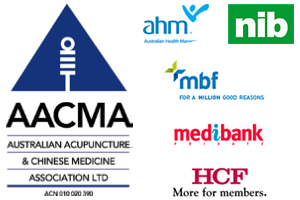Researchers conclude that acupuncture is more effective than conventional relaxation methods for the relief of fatigue in kidney dialysis patients.
Central Hospital of Laifeng District researchers find acupuncture safe and effective for the relief of fatigue in dialysis patients. In a controlled study, investigators compared acupuncture with conventional rejuvenation methods. Acupuncture outperformed conventional methods and provided significant relief for dialysis patients.
Acupuncture relieves fatigue more effectively than conventional rest and relaxation methods for dialysis patients. Researchers from Central Hospital of Laifeng District compared conventional relaxation methods (e.g., napping, eating, chatting, listening to music, watching television) with acupuncture. The Revised Piper Fatigue Scale (RPFS) was used to measure fatigue levels and was chosen based on the quality of its psychometric properties. RPFS is a multidimensional instrument that covers fatigue domains in twenty-two items over four subscales.
Seventy-six dialysis patients were randomly divided into two groups: acupuncture, conventional relaxation. The acupuncture group was needled at the following primary acupoints:
Zusanli, ST36
Sanyinjiao, SP6
Yongquan, KD1
Shenshu, BL23
Perpendicular insertion and manual stimulation using lifting, thrusting, and twirling techniques were applied to the acupoints. The techniques employed for the purposes of tonifying and sedating. Acupuncture was applied once per day, three times per week, for a total of four weeks.
The results demonstrate that acupuncture is effective for relieving fatigue in dialysis patients. Given the widespread prevalence of fatigue in these patients (Wang et al.), acupuncture may be an important addition to conventional therapies for purposes of improving the quality of life. As a result, additional research is warranted to confirm these results and to evaluate methods of integrating acupuncture into usual care medical settings.
Acupuncture is effective for helping dialysis patients in several other ways that have been substantiated by controlled clinical trials. Tsay et al. note, “Uraemic pruritus is a common problem in end-stage renal failure.” The researchers conclude, “Acupuncture at the Quchi (LI11) acupoint is an easy, safe and effective means of relieving uraemic pruritus.” Kim et al. conclude, “Acupuncture seems feasible and safe for symptom management in patients undergoing hemodialysis.”
References:
Wu F. (2015). Acupuncture to alleviate fatigue in dialysis patients. Jilin Journal of Traditional Chinese Medicine. 35(9).
Wang SY, Gao M & Zhao Y. (2013). The credibility of fatigue scale for patients who continuously undertake dialysis. Chinese Journal of Nursing. 49(5): 613-616.
Bossola M, Vulpio C & Tazza L. (2011). Fatigue in chronic dialysis patients. Semin Dial. 24(5): 550-555.
Tsay, Shiow-Luan, Yi-Ching Cho, and Mei-li Chen. “Acupressure and transcutaneous electrical acupoint stimulation in improving fatigue, sleep quality and depression in hemodialysis patients.” The American journal of Chinese medicine 32, no. 03 (2004): 407-416.
Kim, K.H., Kim, T.H., Kang, J.W., Sul, J.U., Lee, M.S., Kim, J.I., Shin, M.S., Jung, S.Y., Kim, A.R., Kang, K.W. and Choi, S.M., 2011. Acupuncture for symptom management in hemodialysis patients: a prospective, observational pilot study. The Journal of Alternative and Complementary Medicine, 17(8), pp.741-748.



